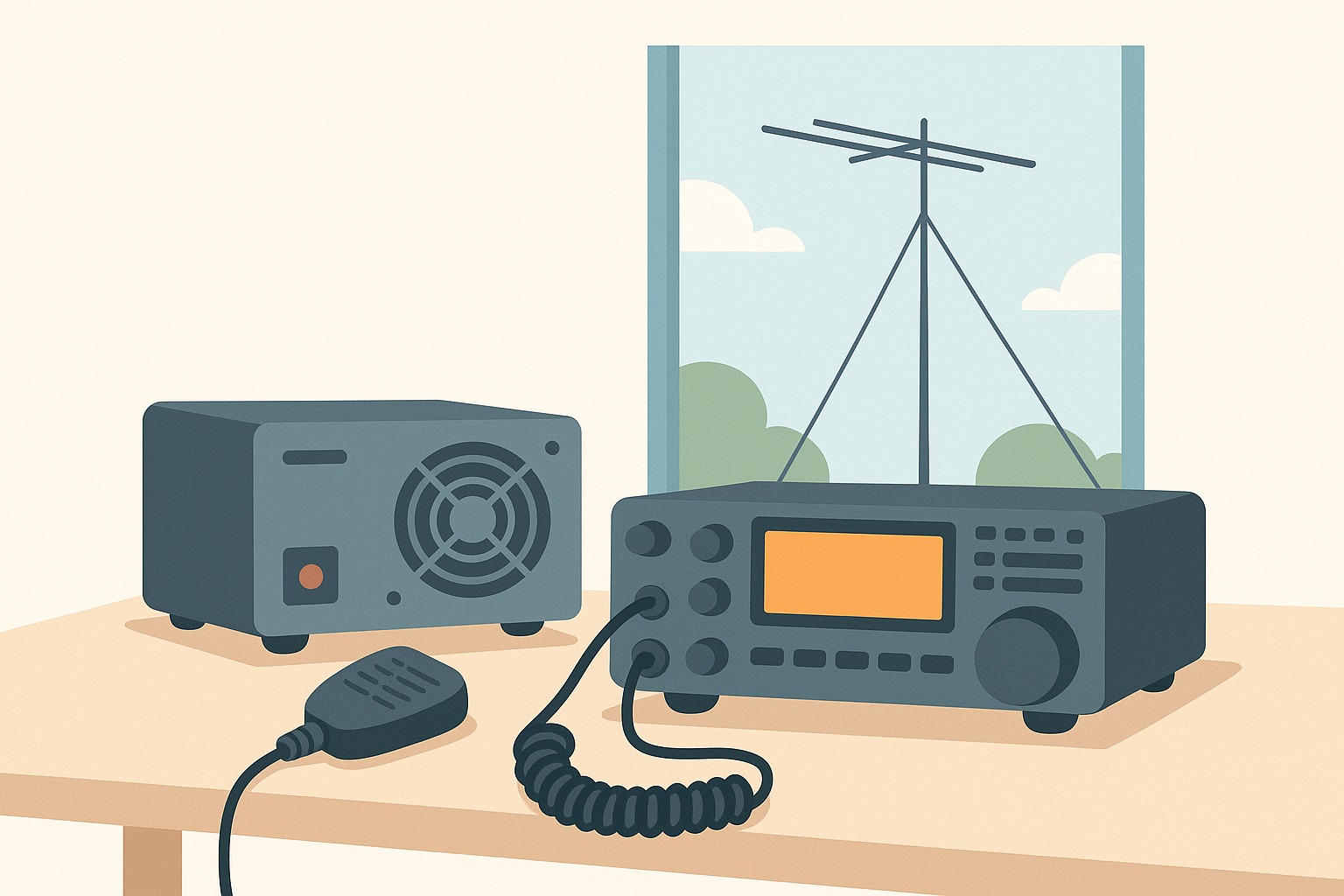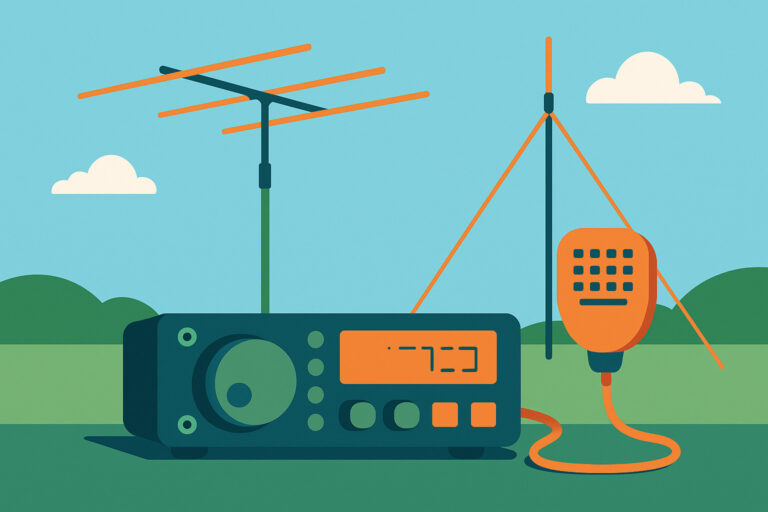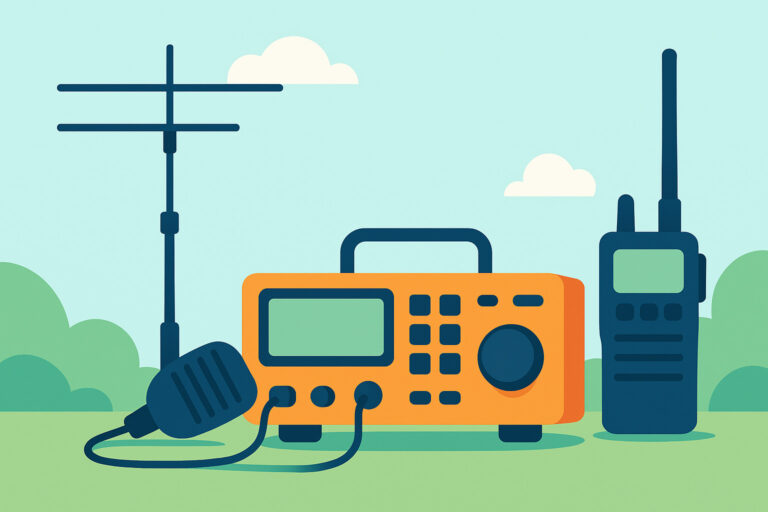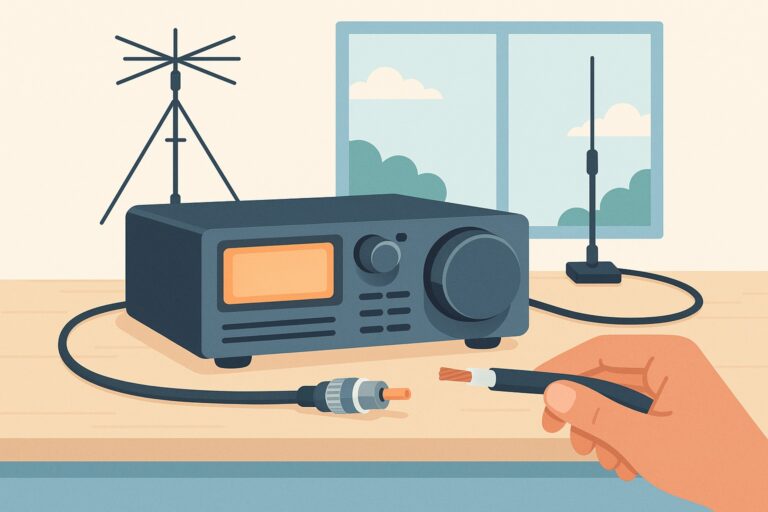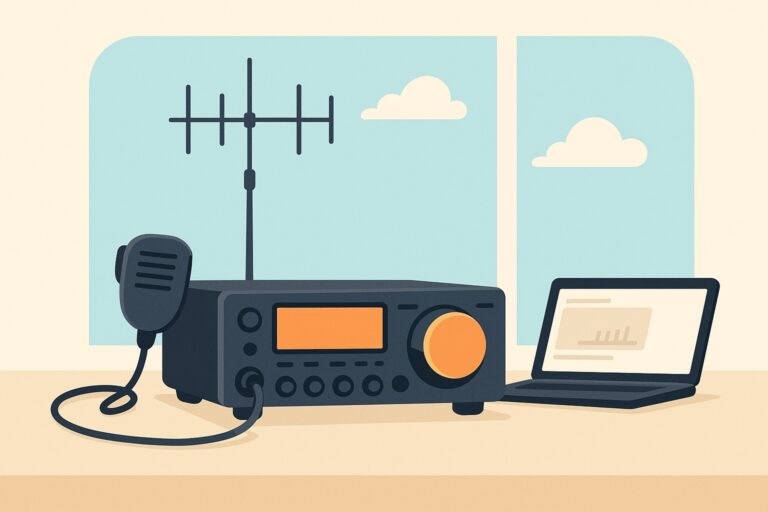How to Choose the Right Power Supply for Your Ham Radio Station
Choosing the right power supply for your ham radio station is one of the most critical decisions you’ll make as an operator. A reliable power supply is the backbone of your setup, ensuring your equipment runs smoothly and safely, whether you’re operating from a fixed location or running portable. With the right knowledge, you can match your station’s requirements to a power supply that delivers both performance and peace of mind.
How to Choose the Right Power Supply for Your Ham Radio Station
Understanding the Importance of a Reliable Power Supply
Your power supply is more than just an accessory—it’s the lifeblood that keeps your ham radio station functioning. Without a stable and dependable source of power, even the most sophisticated transceivers and amplifiers can become unreliable or, worse, damaged. Power interruptions, voltage spikes, and inadequate current can lead to equipment failures and poor signal quality, affecting both your enjoyment and your ability to communicate effectively.
For amateur radio operators, a reliable power supply means:
- Consistent performance: Your transceivers and accessories receive the voltage and current they need without fluctuations.
- Equipment protection: Quality power supplies offer built-in safeguards against short circuits, overloads, and overheating, which extends the life of your valuable gear.
- Operational reliability: You can count on your station to function during emergencies or extended operation sessions, which is essential for contests, public service events, and emergency communications.
The importance of robust power solutions is also underscored by the broader industry trends: “The RF Power Supply Market encompasses the production and distribution of power supplies used in various radio frequency applications, with significant growth driven by advancements in technology and increasing demand for RF energy in sectors such as telecommunications, healthcare, and industrial applications.” This growth reflects how central reliable power is—not just for hams, but for all RF applications.
Assessing Your Station’s Power Requirements
Before you shop for a power supply, it’s crucial to evaluate your station’s current and future needs. Start by listing all devices that require power: your main transceiver, linear amplifier, antenna tuner, digital interfaces, and any other accessories. Each device has its own voltage and current requirements, typically listed in the user manual or on the device label.
For most amateur radio equipment, the standard voltage is 13.8V DC, but always double-check your gear’s specifications. Add up the maximum current draw (in amperes, or “amps”) for all devices that will be operating simultaneously. It’s wise to add a margin of at least 20% to this total to account for future equipment or unexpected surges.
- Example calculation: If your transceiver draws 20 amps on transmit and your accessories add another 5 amps, plan for a supply that can deliver at least 30 amps continuously.
- Consider duty cycle: If you run digital modes or high-power SSB, your power needs under continuous use may be higher than for occasional voice contacts.
- Plan for growth: Investing in a slightly larger power supply now can save you money and hassle as your station expands.
Don’t overlook other factors such as input voltage (do you need a supply compatible with both 110V and 220V AC?), physical space, and noise considerations. The right power supply not only meets your current needs but provides flexibility for future upgrades and changes.
As the hobby grows and technology evolves, so does the demand for higher-capacity, more efficient power solutions. In fact, “The global RF Power Supply market was valued at US$ 641.7 million in 2022 and is anticipated to reach US$ 1,338.1 million by 2029, witnessing a CAGR of 10.7% during the forecast period 2023-2029.” This rapid growth is a testament to the increasing power needs across the RF landscape.
Types of Power Supplies: Linear vs. Switching
When selecting a power supply, you’ll encounter two main types: linear and switching (also known as switch-mode) power supplies. Each has its own set of advantages and trade-offs.
-
Linear Power Supplies:
- Offer clean, noise-free DC output, making them ideal for sensitive radio equipment.
- Heavier and bulkier due to large transformers and heat sinks.
- Generally more expensive and less energy-efficient.
- Preferred for base stations where weight and size are less of a concern.
-
Switching Power Supplies:
- Much lighter and more compact—great for portable or space-limited setups.
- More efficient, generating less heat and using less electricity.
- Can introduce RF noise if not properly designed or filtered, though modern switching supplies have improved significantly in this area.
- Typically more affordable and versatile.
Your choice depends on your operating environment and sensitivity to RF noise. If you have limited space or plan to operate portable, a switching supply may be ideal. For fixed stations where absolute signal purity is essential, a linear supply might be the better investment.
The market for both types continues to expand in response to growing RF needs: “The global RF Power Supply market size is projected to grow from US$ 627.7 million in 2022 to US$ 984.5 million by 2029.“
Key Features to Consider When Selecting a Power Supply
Beyond basic voltage and current ratings, several features can distinguish a great power supply from an inadequate one. When shopping, keep these factors in mind:
- Voltage Regulation: Look for supplies with tight voltage regulation to maintain a steady output even as the load changes.
- Current Capacity: Ensure the supply can handle your highest current draw, with margin for future expansion.
- Overload and Short-Circuit Protection: Safety features that protect both your equipment and the power supply in case of faults.
- RF Noise Suppression: Especially important for switching supplies—check reviews and specs for information on built-in filtering or shielding.
- Cooling and Ventilation: Efficient cooling (fans, heat sinks) extends the life of the supply and prevents overheating during long operating sessions.
- Display and Controls: Digital volt/amp meters, adjustable output, and clear status indicators can make monitoring easier.
- Build Quality and Warranty: A sturdy chassis, reliable connectors, and a good warranty signal a manufacturer’s confidence in their product.
Consider your station’s environment as well. If you’re operating in a dusty or humid area, look for a supply with a sealed enclosure or conformal coating. If portability is important, prioritize compact, lightweight models with strong carrying handles.
Remember, investing in a quality power supply protects your entire station and ensures years of trouble-free operation. As the industry grows, North America leads the way: “North America is the largest market for RF power supplies, holding a share of about 38%, followed by Asia-Pacific and Europe, with shares of approximately 29% and 28%, respectively.“
Top Recommended Power Supplies for Ham Radio Operators
With so many options on the market, choosing a power supply can feel overwhelming. Here are some top recommendations, popular among experienced ham operators for their reliability, performance, and value:
-
Linear Power Supplies:
- Preferred for base stations due to their low noise and rugged build.
- Well-known models from Astron and MFJ deliver consistent, clean power for even the most sensitive gear.
- Ideal for operators who value signal purity and are less concerned about weight or space.
-
Switching Power Supplies:
- Modern switching supplies from brands like Samlex, Alinco, and Powerwerx combine efficiency with RF noise suppression.
- Great for portable, mobile, or limited-space stations.
- Look for models with adjustable output, built-in meters, and multiple output terminals to power several devices at once.
When making your final decision, check user reviews and ask fellow operators about their experiences. A well-chosen power supply will serve as the foundation of your station for years to come.
The demand for quality RF power supplies continues to rise, reflecting their critical role in ham radio and beyond: “The global RF Power Supply market was valued at US$ 746.6 million in 2022 and is projected to reach US$ 1,480.8 million by 2029, at a CAGR of 10.3% during the forecast period.“
For more tips, in-depth reviews, and expert advice, visit https://hamradioplayground.com. Your perfect power supply is out there—choose wisely, and enjoy the confidence that comes with a rock-solid station setup!

